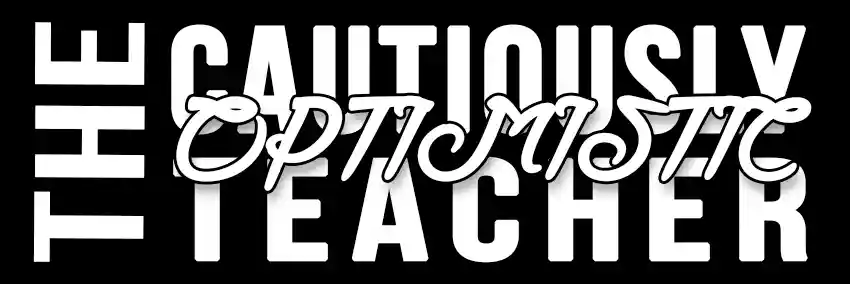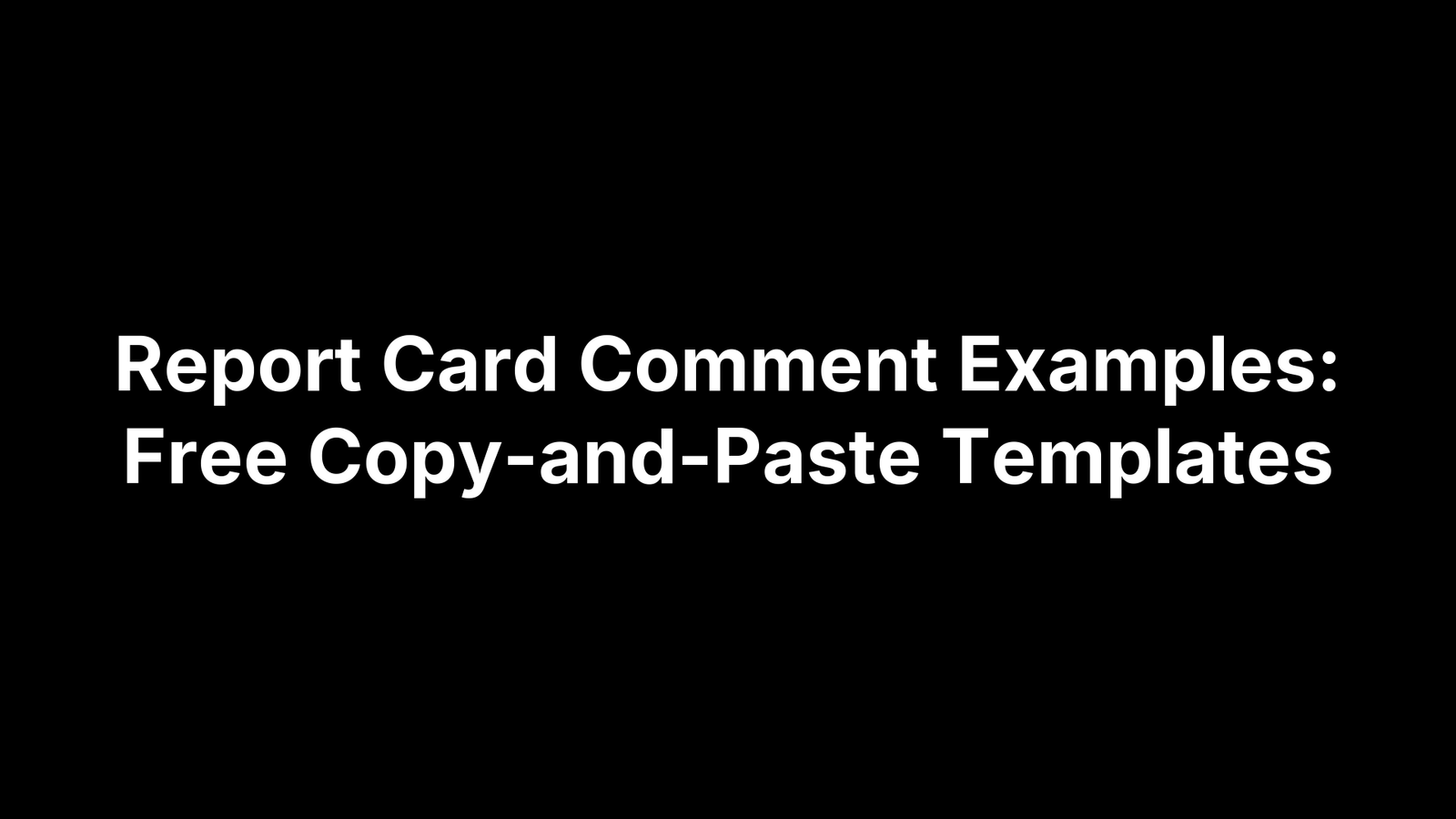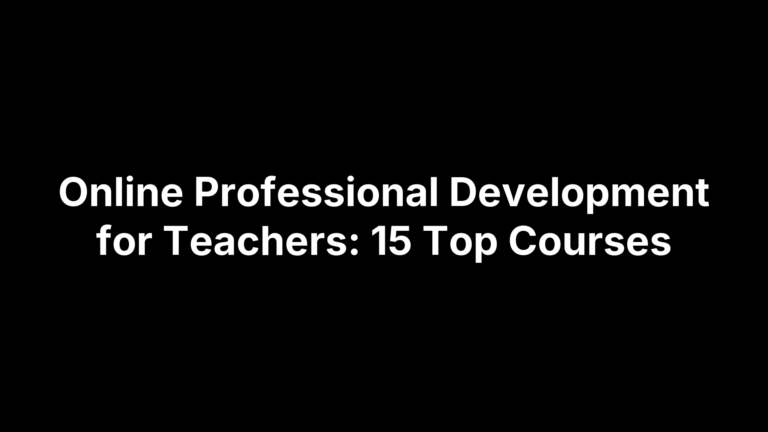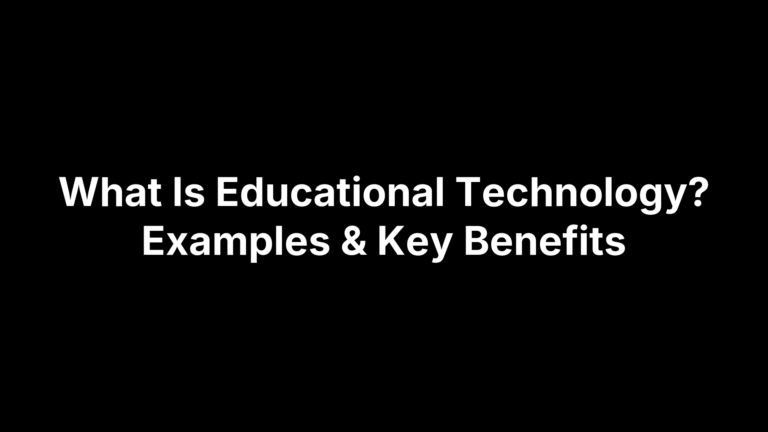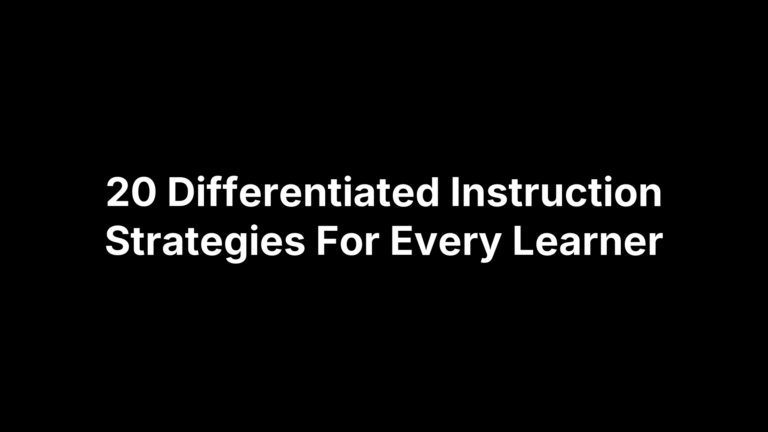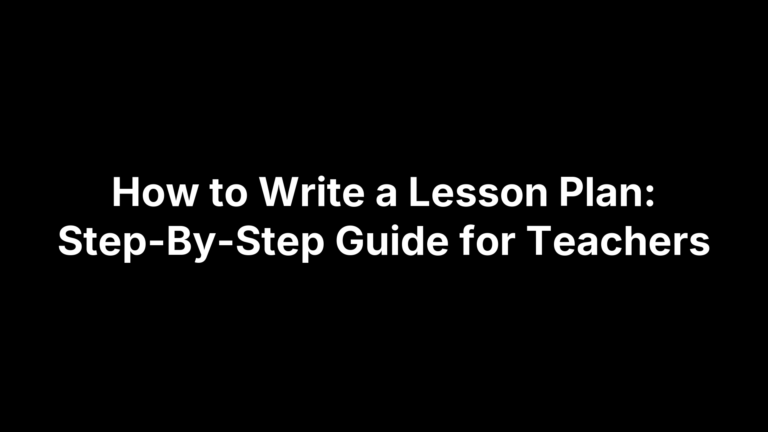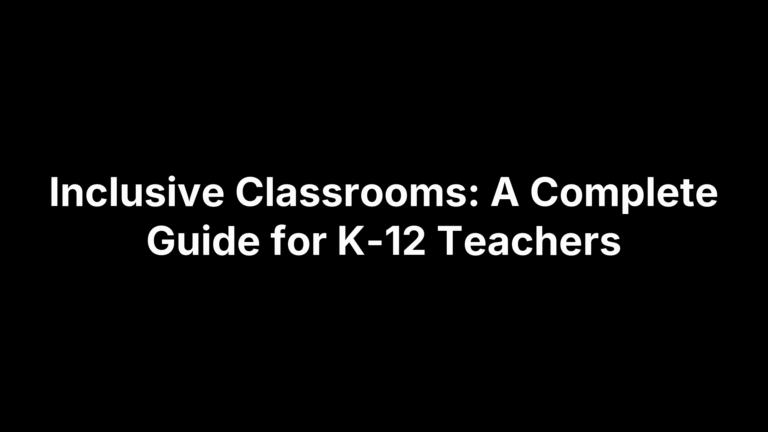Report Card Comment Examples: Free Copy-and-Paste Templates
It’s report card season and your to‑do list is already full. Now you’re staring at a blank comment box, trying to be honest and supportive, specific and concise, all while staying within character limits and district tone guidelines. You want comments that sound like a human who knows each student—not recycled lines that could fit anyone—and you need them fast enough to meet the deadline without sacrificing accuracy, equity, or a growth‑minded nudge.
This article is your shortcut. Below you’ll find a complete library of free, copy‑and‑paste templates organized by what teachers actually write: strong openers and closers, quick one‑liners, fuller narrative paragraphs, and targeted sets for learning skills, work habits, behavior, participation, communication, social skills, time management, motivation, and academic progress in every core subject. You’ll also get specialized sections for distance learning, attendance and preparedness, ELL/MLL asset‑based wording, IEP/504‑aware phrasing, standards‑based descriptors, and enrichment/extension notes. Each section includes when to use it, ready‑to‑copy options, and simple personalization tips. Prefer automation? Try The Cautiously Optimistic Teacher’s free Report Card Commentor. Let’s get you to your next class—with comments you’ll feel good about sending home.
1. The Cautiously Optimistic Teacher report card commentor
Our Report Card Commentor turns your notes and goals into clear, consistent comments that fit character limits—and sound like you.
When to use
Use it when deadlines loom, tone must stay consistent, or writer’s block hits mid‑comment.
Copy-and-paste templates
Start with these templates.
- General progress:
{{Student}}shows steady growth in{{subject}}. Strength:{{strength}}. Next step:{{next_step}}. - Needs improvement:
{{Student}}needs clearer focus during{{context}}. Try:{{strategy}}. I’ll provide{{support}}. - Work habits/behavior:
{{Student}}uses time well and follows directions; reliable with deadlines.
Personalization tips
Make each line yours with one specific detail.
- Add evidence: name a task, date, or brief result.
- Match tone: lead with a positive; keep family‑friendly language.
2. Strong openers and closers
The first and last lines do the heavy lifting: they set the tone, honor the student, and frame next steps. Use these report card comment examples to quickly craft beginnings and endings that sound professional, warm, and growth‑focused.
When to use
Use strong openers and closers on every report—especially when space is tight or multiple teachers contribute. A clear lead and a forward‑looking close keep families focused on what’s going well and what comes next.
Copy-and-paste templates
Mix one opener with one closer to frame any comment.
- Opener: It’s been a pleasure to see
{{Student}}grow in{{subject}}. - Opener:
{{Student}}approaches learning with curiosity and steady effort. - Opener:
{{Student}}is building confidence and consistency in{{skill}}. - Closer: Next, we’ll target
{{next_step}}; I’ll support with{{support}}. - Closer: Please continue
{{home_strategy}}at home to reinforce progress. - Closer: I’m proud of the growth so far and excited for what’s ahead.
Personalization tips
Lead with one specific strength, then close with a single, actionable next step. Keep family‑friendly language, and swap placeholders for a brief example (assignment, date, or behavior) to make it unmistakably about {{Student}}.
3. Quick one-liners you can paste today
Sometimes you just need a crisp, accurate sentence that fits the character limit. These quick report card comment examples let you paste now and tweak later—perfect for progress notes, standards-based updates, or midterm reports.
When to use
Use when space is tight, you’re batching comments, or you need a fast, growth‑minded line you can personalize in seconds.
Copy-and-paste templates
Drop these one-liners into your gradebook.
{{Student}}shows steady growth in{{subject}}.{{Student}}participates respectfully and stays on task.{{Student}}completes assignments on time and carefully.{{Student}}needs to listen closely during instruction.{{Student}}applies feedback and improves work quality.{{Student}}should practice{{skill}}daily for fluency.
Personalization tips
Add one concrete touch and you’re done.
- Reference a task or date.
- Name one next step.
- Keep the tone growth‑minded and specific.
4. Narrative paragraph templates for holistic comments
Use these narrative paragraph templates when you want a fuller, holistic report card comment that blends learning skills, academics, and next steps. Each balances strengths, specific evidence, and a concrete plan so families know what’s working, what to focus on, and how you’ll help—an approach research supports as most useful for student growth.
When to use
Choose a narrative paragraph for end-of-term reports, conferences, or anytime a one-liner can’t capture the whole picture across work habits, behavior, and achievement.
Copy-and-paste templates
Paste, then swap placeholders to fit your student.
- Balanced progress:
{{Student}}has grown in{{subject}}, showing{{evidence}}. Next, we’ll target{{next_step}}; I’ll provide{{support}}, and home practice can include{{home_strategy}}. - Supportive improvement:
{{Student}}is capable but inconsistent with{{skill}}, especially during{{context}}. We’ll use{{strategy}}with weekly check‑ins; please reinforce{{home_strategy}}. - High achiever/extension:
{{Student}}exceeds grade‑level expectations in{{area}}and applies learning to{{real_world}}. To extend, I’ll offer{{enrichment}}and invite{{leadership_role}}. - Work habits + academics:
{{Student}}manages time well and collaborates respectfully, supporting steady progress in{{subject}}. Next step: increase independence on{{task}}using{{tool}}.
Personalization tips
Make it unmistakably about {{Student}} with these quick edits.
- Add one piece of evidence (assignment, date, score trend) and an observable behavior.
- Quantify with clear frequency words (e.g., “consistently,” “often,” “sometimes”) and keep tone growth‑minded.
- Name the specific support you’ll provide at school and one realistic home strategy.
5. Learning skills and attitudes: positive
These report card comment examples highlight growth mindset, responsibility, and enthusiasm for learning—qualities families value and schools expect. Keep them short, specific, and encouraging so they fit character limits while still sounding personal.
When to use
Use these for students who demonstrate initiative, perseverance, and respectful learning behaviors across settings, or when you want to open with strengths before content‑area details.
Copy-and-paste templates
Use or adapt the lines below.
- Growth mindset:
{{Student}}tackles challenges and learns from feedback consistently. - Initiative:
{{Student}}takes responsibility for learning and seeks helpful next steps. - Curiosity:
{{Student}}asks thoughtful questions and connects ideas across lessons. - Persistence:
{{Student}}perseveres when work is difficult and finishes with care. - Positive attitude:
{{Student}}brings a respectful, optimistic approach that supports peers.
Personalization tips
Name one specific moment (task/date) that shows the trait, and pair it with a concrete next step (e.g., “apply this persistence to multi‑step writing tasks next unit”) to keep the praise actionable.
6. Learning skills and attitudes: needs improvement
Use these report card comment examples to address habits with a supportive, actionable tone. Name the need, the strategy, and the plan so families see a clear, doable path forward.
When to use
Use when focus, initiative, or follow‑through is inconsistent across classes and you need a growth‑minded nudge with concrete next steps.
Copy-and-paste templates
Paste, then tweak.
- Attention/focus:
{{Student}}needs to listen closely and limit distractions. - Directions:
{{Student}}should reread directions and confirm understanding. - Independence:
{{Student}}needs fewer prompts to start and persist. - Self‑advocacy:
{{Student}}should ask clarifying questions when unsure.
Personalization tips
Add one support and one home routine.
- Teacher support: I’ll model note‑taking and set brief check‑ins.
- Home strategy: Try a quiet workspace and a simple checklist.
7. Work habits and organization: positive
Strong work habits and organized materials make learning smoother. These positive report card comment examples spotlight planning, effective use of time, and careful work families can celebrate and sustain.
When to use
Use when a student meets deadlines, stays on task, and keeps materials tidy across classes. It also works as a strengths lead‑in before subject comments or goal setting.
Copy-and-paste templates
Paste, then swap placeholders to match your routines. Keep phrasing clear.
{{Student}}produces neat, accurate work and checks details before submitting.{{Student}}uses class time well, starts promptly, and stays on task.{{Student}}keeps materials organized and finds needed resources quickly.
Personalization tips
Name one observed routine and where it showed up (planner check, binder tabs, lab setup). Add a micro‑goal like “sustain this during long‑term projects.”
8. Work habits and organization: needs improvement
When organization and follow‑through slip, use these report card comment examples to stay clear, kind, and actionable—naming the need, the support, and the next step.
When to use
Use for missed deadlines, messy materials, rushed work, or off‑task time that lowers quality or requires frequent reminders.
Copy-and-paste templates
Paste, then tweak.
- Missing/late work:
{{Student}}needs to submit work on time; I’ll set checkpoints. - Organization:
{{Student}}should organize binder/desk daily; I’ll model a simple system. - Rushed/careless:
{{Student}}rushes; rereading directions will reduce errors. I’ll cue quick checks. - Use of time:
{{Student}}must use class time wisely; a visual timer will support focus.
Personalization tips
- Add one routine (e.g., “planner signed M/W/F”) and a date.
- Pair one school support (check‑ins) with one home step (quiet workspace).
9. Behavior and citizenship: positive
Behavior and citizenship shape a safe, inclusive class culture. Use these report card comment examples to recognize cooperation, respect, and responsibility.
When to use
Use when a student regularly follows rules, supports peers, and builds community. These also fit hallway conduct.
Copy-and-paste templates
Paste, then tweak.
- Cooperation:
{{Student}}cooperates consistently and works well in groups. - Respect:
{{Student}}is courteous, follows rules, and accepts feedback. - Citizenship:
{{Student}}assists classmates and contributes to school initiatives. - Responsibility:
{{Student}}cares for materials and completes class jobs reliably.
Personalization tips
Make it clearly about {{Student}}.
- Cite one specific act (safety patrol, peer help, cleanup).
- Add a frequency word: consistently, often, usually, or sometimes.
10. Behavior and citizenship: needs improvement
When behavior starts to interfere with learning, clear and kind wording matters. These report card comment examples focus on what needs to change, the support you’ll provide at school, and one doable next step. The goal is not a label—it’s a plan families can understand and act on.
When to use
Use when rule‑following, respect, or peer conduct is inconsistent and redirects are frequent.
Copy-and-paste templates
Try these concise, growth‑minded lines.
- Rules/respect:
{{Student}}must follow rules and use respectful language; I’ll pre‑teach expectations. - Talkative/off‑task:
{{Student}}is often talkative during work time; a seat change and timer will support focus. - Peer interactions:
{{Student}}should handle disagreements appropriately; we’ll practice calm words and fair turn‑taking.
Personalization tips
Personalize with one context (e.g., transitions), a school support (brief check‑ins), and a simple home routine (review one rule nightly).
11. Participation and engagement: positive
Strong participation signals buy‑in, confidence, and curiosity. Use these report card comment examples to recognize students who listen attentively, contribute thoughtfully, and sustain engagement across activities—whole‑group, small‑group, and independent work.
When to use
Use for students who regularly volunteer, build on peers’ ideas, and stay engaged during instruction and practice.
Copy-and-paste templates
Try these concise starters and swap in specifics.
- Attentive listener:
{{Student}}listens closely and responds thoughtfully in{{context}}. - Active contributor:
{{Student}}volunteers ideas that extend class discussion in{{subject}}. - Peer builder:
{{Student}}invites others in and builds on classmates’ thinking. - Consistent engagement:
{{Student}}stays focused and participates throughout lessons and activities.
Personalization tips
Name one discussion/task (date/topic) and add a frequency word.
- Cite a moment: “Socratic seminar on ‘{{text/topic}}’.”
- Add impact: “helped the group reach consensus on
{{problem}}.”
12. Participation and engagement: needs improvement
When to use
Use these report card comment examples when a student is quiet, off‑task, or reluctant to participate and it’s limiting learning or group work. Aim for clear need + support + next step to keep the tone constructive and actionable. These lines also fit tight character limits while setting up a simple plan families can reinforce.
Copy-and-paste templates
Paste, then tweak.
{{Student}}seldom shares; I’ll use think‑pair‑share and equity sticks to invite voice.{{Student}}loses focus during work time; a seat change and a visual timer will help.{{Student}}needs to track speakers and jot key points; I’ll model and cue note‑taking.
Personalization tips
Make it concrete.
- Add one context (lab, seminar, stations) and a date or example.
- Pair a school support (prompt, tracker) with a simple home routine (review notes 5 minutes).
13. Communication and collaboration: positive
Communication and teamwork power learning. These report card comment examples recognize clear speech, active listening, and respectful collaboration.
When to use
Use for students who elevate groups and communicate clearly across settings.
Copy-and-paste templates
Paste and tweak.
{{Student}}expresses ideas clearly in discussions and writing.{{Student}}listens without interrupting and builds on peers’ ideas.{{Student}}offers constructive suggestions and accepts feedback graciously.{{Student}}takes needed roles and helps keep groups on task.
Personalization tips
Try these.
- Name the context (lab, seminar, project) and role (facilitator, recorder).
- Add one result (solved, completed on time) and a frequency word (consistently/often).
14. Communication and collaboration: needs improvement
When speaking and teamwork stall, clarity and kindness matter. Keep the wording specific, growth‑minded, and actionable so families can see the path from concern to progress.
When to use
Use when interruptions, unclear or unkind language, or uneven group roles limit learning, or when a student resists feedback or needs frequent redirects during group work.
Copy-and-paste templates
Use need + school support + next step.
- Interruptions: {{Student}} needs to listen without interrupting; I’ll model turn‑taking and use talk tokens.
- Balanced voice: {{Student}} should balance contributions; we’ll rotate roles and set a participation goal.
- Feedback: {{Student}} must accept and act on peer feedback; I’ll provide a checklist and quick conferences.
- Shared tasks: {{Student}} should share workload equitably; role cards and midpoint checks will help.
Personalization tips
Make it unmistakably about {{Student}} in one sentence.
- Name the context (lab, seminar, project) and one example/date.
- Add a frequency word (often/usually/sometimes) and a simple home routine (review sentence starters nightly).
15. Social skills and peer relationships: positive
Healthy peer relationships fuel learning and classroom climate. Use these report card comment examples to acknowledge kindness, empathy, and the ability to build inclusive, supportive friendships that help groups thrive.
When to use
Use when a student makes friends easily, treats classmates fairly, and handles disagreements appropriately in groups, transitions, and unstructured times.
Copy-and-paste templates
Use or adapt these.
- Welcomes peers:
{{Student}}makes friends quickly and includes others during{{context}}. - Empathy:
{{Student}}notices classmates’ feelings and offers help without prompting. - Conflict skills:
{{Student}}handles disagreements calmly and seeks fair solutions. - Community builder:
{{Student}}is well‑liked and helps groups collaborate respectfully.
Personalization tips
Add one concrete moment to make it unmistakably about {{Student}}.
- Name the setting and action (e.g., “invited
{{peer}}to join the lab team on 10/2”). - Add impact (“helped the group stay on task and finish early”).
16. Social skills and peer relationships: needs improvement
These report card comment examples address friendship skills with clarity and care. Keep the tone supportive: name the need, the school support, and one doable next step families can reinforce.
When to use
Use when {{Student}} struggles with turn‑taking, inclusive language, or conflict resolution during group work, transitions, or unstructured time. Aim for brief, clear wording that invites partnership and growth.
Copy-and-paste templates
Use need + support + next step.
- Conflict skills:
{{Student}}should handle disagreements calmly; we’ll practice sentence starters and role‑play weekly. - Inclusion:
{{Student}}needs to include peers; I’ll pre‑teach welcoming language and assign rotating roles. - Listening/interruptions:
{{Student}}must wait turns and listen fully; I’ll model cues and use talk tokens.
Personalization tips
Ground the comment in one concrete moment and a simple plan families can echo at home.
- Cite a setting and example (e.g., “group lab on 10/3”).
- Pair a school support (role cards) with a home routine (review “I”‑statements nightly).
17. Time management and meeting deadlines: positive
Meeting deadlines is a teachable skill—and worth celebrating. Use these positive report card comment examples to recognize students who plan ahead, work at an appropriate pace, and finish on time, so families can reinforce them.
When to use
Use when a student consistently manages time and meets checkpoints.
Copy-and-paste templates
Paste, then tweak.
- On‑time work:
{{Student}}meets deadlines and paces long‑term tasks well. - Uses time well:
{{Student}}starts promptly, stays focused, and finishes within allotments. - Prepared + proactive:
{{Student}}plans ahead and seeks help before due dates.
Personalization tips
- Add one checkpoint/date and the task name.
- Note one routine (planner, calendar, progress log).
18. Time management and meeting deadlines: needs improvement
When pacing and deadlines slip, be clear and kind: name the need, add supports, and set checkpoints. These report card comment examples keep the tone constructive and the plan doable.
When to use
Use when late or missing work, slow starts, or rushed submissions persist. Especially helpful before long projects or at midterm checkpoints.
Copy-and-paste templates
Start with need + support + checkpoint.
- Missed checkpoints:
{{Student}}missed checkpoints on{{task}}; we’ll chunk tasks and add planner checks. - Slow starts:
{{Student}}needs to begin promptly; a visual timer and “first‑three” checklist will support starts. - Rushed work:
{{Student}}rushes and makes errors; we’ll add a 2‑minute quality check before submitting. - Late/missing work:
{{Student}}has late items; I’ll set mini‑deadlines with daily progress checks. - Underestimates time:
{{Student}}misjudges task length; we’ll backward‑plan with interim due dates.
Personalization tips
Keep it concrete and brief.
- Add one date/checkpoint and the
{{task}}name. - Pair a school support (timer/checklist) with a home routine (planner sign‑off).
19. Effort, motivation, and growth mindset
Families notice when you honor hustle as much as outcome. Use growth‑minded wording that links effort to strategies and results, so students know what to keep doing and where to aim next.
When to use
Use when persistence, resilience, or self‑motivation stands out—or needs a supportive nudge.
Copy-and-paste templates
- Persists:
{{Student}}keeps trying when work is difficult and applies feedback. - Self‑starter:
{{Student}}begins tasks promptly and seeks solutions before asking. - Learns from mistakes:
{{Student}}revises thoughtfully and improves with each draft. - Motivation boost needed:
{{Student}}benefits from short goals and check‑ins to sustain effort. - Strategy focus:
{{Student}}uses{{strategy}}to make steady progress in{{skill}}.
Personalization tips
- Add one specific evidence point (task/date/result).
- Pair praise with a next step: name the strategy to repeat or refine.
20. Academic achievement and progress (all subjects)
Use these report card comment examples to summarize where a student stands across content areas—ideal for standards-based report cards, midterms, or end-of-term summaries. Keep them clear, growth‑minded, and anchored to observable evidence so families see both achievement and trajectory.
When to use
Use for overall academic snapshots, cross‑subject summaries, or when you need neutral, standards-aligned wording that fits character limits and pairs easily with subject‑specific notes.
Copy-and-paste templates
Paste, then tweak.
- Exceeds:
{{Student}}consistently exceeds grade‑level expectations in{{subject}}by{{evidence}}. - Meets:
{{Student}}meets standards and applies skills independently in{{subject}}. - Progressing:
{{Student}}is progressing toward proficiency in{{skill}}; recent work shows improvement in{{evidence}}. - Emerging:
{{Student}}is beginning to grasp core concepts in{{subject}}; targeted practice in{{area}}will help. - Growth trend: Since
{{date}},{{Student}}has shown steady growth in{{skill}}(e.g.,{{assessment/task}}). - Assessment + transfer:
{{Student}}demonstrates understanding on assessments and transfers learning to new tasks. - Plan: Next step:
{{next_step}}. I’ll support with{{support}}; please reinforce{{home_strategy}}.
Personalization tips
- Cite one concrete evidence point (unit, rubric row, benchmark) and a frequency word (consistently/often/sometimes).
- Align wording to your proficiency scale (e.g., Exceeds/Meets/Approaching/Beginning).
- Pair each summary with one actionable next step and the support you’ll provide.
21. Math-specific comments
These math report card comment examples cover fact fluency, place value, regrouping, problem solving, and reasoning—clear, concise lines you can paste and tailor to your standards and grade.
When to use
Use when summarizing number sense progress, fact fluency, operations with regrouping, place value to 1,000, multi‑step word problems, or when you want to note mathematical reasoning and use of strategies/models.
Copy-and-paste templates
Start with a template, then swap in your skill, evidence, and next step.
{{Student}}is building fluency with addition/subtraction facts to 18; daily practice will boost speed and confidence.{{Student}}demonstrates place value understanding to 1,000 and uses it to compare and order numbers.{{Student}}can add/subtract within 100 with regrouping and explains steps using base‑ten models.{{Student}}solves one‑ and two‑step word problems and shows work clearly with equations and sentence answers.{{Student}}is progressing with multiplication/division facts; short, daily practice will improve accuracy and pace.{{Student}}justifies solutions with clear reasoning and uses representations (arrays, number lines) appropriately.{{Student}}needs support with long division; we’ll use partial quotients and checkpoint conferences.
Personalization tips
Cite one recent task (quiz, problem set, project) and a concrete support (manipulatives, anchor chart, small‑group check‑ins). Pair each comment with one actionable home routine (e.g., “5‑minute fact practice,” “explain one problem aloud nightly”).
22. English language arts (reading, writing, spelling)
These ELA report card comment examples cover reading, writing, and spelling in clear, growth‑minded language you can paste. Use them for standards‑based or traditional reports, then add one specific detail to make each line unmistakably about your student.
When to use
Use for quick ELA snapshots across units and checkpoints. They also fit end‑of‑term summaries when space is tight.
Copy-and-paste templates
Paste, then swap skill, evidence, and next step. Keep lines concise.
- Reading fluency:
{{Student}}reads grade‑level texts fluently and explains key ideas. - Comprehension:
{{Student}}is building comprehension; think‑alouds and questions support understanding. - Writing organization:
{{Student}}writes organized paragraphs with evidence and clear transitions. - Revision/conventions:
{{Student}}revises for clarity and edits punctuation and grammar accurately. - Vocabulary:
{{Student}}uses vivid, precise word choice in speaking and writing. - Spelling:
{{Student}}needs regular practice with{{pattern}}; we’ll use word sorts.
Personalization tips
Make it unmistakably about {{Student}} and actionable. Keep it brief.
- Cite one text/task and date (e.g., “novel study 10/3”).
- Add a next step and support (“graphic organizer + weekly conference”).
23. Science and social studies comments
Science and social studies center on evidence, sources, and cause‑and‑effect. These report card comment examples spotlight inquiry skills and transferable understanding.
When to use
Use for unit wrap‑ups, labs, DBQs, projects, and checkpoints. They fit standards‑based and traditional grades.
Copy-and-paste templates
{{Student}}follows lab procedures, records accurate data, and explains results (CER).{{Student}}needs support planning investigations and representing data clearly.{{Student}}analyzes sources and cites relevant evidence.{{Student}}should support claims with evidence and explain cause/effect.
Personalization tips
Name the unit and task and add one observed behavior. Pair each need with a tool you’ll use at school (organizer, sentence frames, checkpoints).
24. Distance learning and digital citizenship
Online and hybrid learning deserve comments that reflect engagement, tech readiness, and digital citizenship. Families want to know how {{Student}} participates in live sessions and breakout rooms, manages digital assignments, troubleshoots issues, and follows online norms (mute/chat/turn‑taking). Keep it concise, specific, and growth‑minded.
When to use
Use for classes with live sessions, LMS submissions, or anytime online norms and tech behaviors affect learning.
Copy-and-paste templates
{{Student}}stayed engaged in live lessons/breakouts and contributed thoughtfully.{{Student}}submitted digital work on time and followed instructions carefully.{{Student}}needed prompts to stay focused; I’ll add check‑ins and visual cues.{{Student}}modeled respectful online behavior and used chat responsibly.{{Student}}handled tech issues calmly and asked for help appropriately.
Personalization tips
- Name a platform/feature and date (e.g., “Meet chat, 10/4”).
- Pair one school support (check‑ins) with a home routine (device check, quiet space).
25. Attendance, punctuality, and preparedness
Use when attendance, tardies, or readiness affect learning. These fit progress notes and make‑up plans.
When to use
Use when attendance patterns, late arrivals, or missing materials consistently help or hinder learning. These comments also work for summarizing make‑up work expectations after absences.
Copy-and-paste templates
Keep it tight: name pattern, impact, and plan. Swap in your routines and dates.
{{Student}}arrives on time and prepared daily.- Solid attendance; make‑up work is completed promptly.
{{Student}}has frequent tardies; we’ll teach arrival routines and track weekly.{{Student}}forgets materials/charged device; a checklist and morning cue will help.
Personalization tips
Add a count or date (e.g., “3 tardies this quarter”) and one commonly missing item. Pair one school support (checklist, catch‑up slot) with a simple home routine (night‑before backpack check).
26. ELL/MLL asset-based comments
These asset-based report card comment examples spotlight multilingual strengths, celebrate growth across language domains, and outline clear next steps. Keep wording family‑friendly, honor the home language, and focus on strategies that work—not deficits—so families feel seen and supported.
When to use
Use for multilingual learners developing English with visible progress and supports across listening, speaking, reading, and writing.
Copy-and-paste templates
Paste, then tweak.
- Builds on home language:
{{Student}}builds on home language to make meaning; speaking confidence is growing in{{context}}. - Domain growth:
{{Student}}shows steady growth in{{domain}}and uses visuals/sentence frames to explain ideas. - Academic vocabulary:
{{Student}}is expanding academic vocabulary in{{unit}}; next step: use new words in short writing.
Personalization tips
Keep it concrete and encouraging.
- Name the domain (listening/speaking/reading/writing), the scaffold (visuals/word bank), and one next step.
- If appropriate, note the home language and a simple family routine (read/discuss in any language).
27. IEP/504 and accommodations-aware comments
Write accommodations‑aware comments that honor privacy, document access, and center progress. Reference the plan and supports—not diagnoses—while naming what works and the next step.
When to use
Use for students with an IEP/504 when noting progress toward goals and effective accommodations, and when families need clarity on how supports are used in class.
Copy-and-paste templates
Start here and swap in plan details.
- Progress with supports:
{{Student}}is progressing toward{{goal}}using{{accommodation}}; evidence:{{task/date}}. - Access + next step: With
{{accommodation}},{{Student}}accesses{{subject}}; next:{{next_step}}. I’ll provide{{school_support}}. - Self‑advocacy:
{{Student}}requests supports appropriately; goal: initiate{{accommodation}}independently in{{context}}.
Personalization tips
Keep it specific and compliant.
- Cite the plan goal, not a diagnosis.
- Name the accommodation exactly as listed.
- Add one evidence point (task/date/frequency) and a clear next step.
28. Goal-setting and next steps with home support
Clear goals turn report card comments into a plan families can act on. Frame one strength, one specific next step, and the support you’ll provide—then name a simple home routine so school and home pull in the same direction.
When to use
Use at term endings, after conferences, or anytime progress needs a focused target families can reinforce with short, doable habits.
Copy-and-paste templates
Try these strength → next step → school support → home routine lines.
{{Student}}has grown in{{skill}}. Next:{{next_step}}. I’ll support with{{school_support}}; at home, try{{home_strategy}}(5–10 minutes).{{Student}}needs consistent organization. We’ll add checkpoints and planner cues; at home, a nightly backpack check and planner sign‑off will help.{{Student}}benefits from daily practice in{{skill}}. I’ll send brief practice; please set a short routine (e.g., read together or facts practice before screen time).
Personalization tips
Name one evidence point (task/date), choose one realistic home habit (read together, checklist, device charged), and add a checkpoint date to review progress.
29. Standards-based grading proficiency descriptors
Standards-based grading works best when descriptors are clear, consistent, and tied to evidence. Use these report card comment examples to communicate where {{Student}} sits on a proficiency scale and what comes next—without drifting into point-based language.
When to use
Use for standards snapshots, rubric summaries, or progress reports. Match your district scale (e.g., 4/3/2/1 or Exceeds/Meets/Approaching/Beginning) and keep wording evidence-based and growth‑minded.
Copy-and-paste templates
Choose the label that fits your scale, then swap in the standard and evidence.
- 4 – Exceeds/Advanced:
{{Student}}consistently exceeds{{standard}}, transferring learning to new contexts. Evidence:{{task/date}}. Next:{{extension}}. - 3 – Meets/Proficient:
{{Student}}meets{{standard}}independently. Evidence:{{task/date}}. Next: apply to multi‑step{{context}}. - 2 – Approaching/Developing:
{{Student}}shows partial proficiency in{{standard}}with support. We’ll use{{scaffold}}. Focus:{{next_step}}. - 1 – Beginning/Emerging:
{{Student}}is beginning to develop{{standard}}and needs frequent guidance. Plan:{{reteach/support}}. - NA – Not assessed:
{{standard}}was not assessed this term.
Personalization tips
Name the exact standard (code or plain language), include one concrete evidence point (rubric row, task, date), and add a single, actionable next step. Keep descriptors aligned to your scale and use clear frequency words (consistently/often/sometimes/with support).
30. Differentiation, enrichment, and extension comments
Families appreciate knowing how instruction is tailored—and how their child is stretched. These report card comment examples make it easy to note scaffolds, choice, small‑group support, and enrichment without revealing private information.
When to use
Use when {{Student}} benefits from targeted supports, prefers a different pathway to show learning, or is ready for advanced applications and leadership. Keep wording strengths‑based, clear, and focused on what’s working and what’s next.
Copy-and-paste templates
Start with a strengths statement, then add the pathway and plan.
{{Student}}learns best with{{strategy}}(e.g., visuals, sentence frames) and applies it in{{context}}. Next:{{next_step}}.- In small group,
{{Student}}made strong gains in{{skill}}; we’ll continue weekly check‑ins and{{tool}}. {{Student}}shows understanding through choice ({{product}}); next, try{{new_product}}to extend audience and purpose.{{Student}}exceeds expectations in{{area}}; I’ll provide enrichment with{{enrichment}}and invite a{{leadership_role}}.
Personalization tips
Anchor each line in one evidence point and a concrete next step.
- Add a brief example (task/date) and a frequency word (consistently/often/sometimes).
- Name one support you’ll provide at school and one optional home routine families can reinforce.
Key takeaways
Great report card comments are specific, humane, and useful. Lead with a real strength, anchor claims in quick evidence, and name one clear next step with the exact support you’ll provide. Keep language family‑friendly, align to your grading scale, protect privacy, and invite home partnership with simple routines that fit real life.
- Open strong, close forward: Strength → next step → support.
- Be concrete: Cite a task/date or observable behavior.
- Make it doable: School scaffold + one simple home routine.
- Match your scale: Use consistent, standards‑aligned descriptors.
- Honor access: Note accommodations without naming diagnoses.
- Save time: Paste a template, then add one personal detail.
Bookmark this library and, when you’re crunched for time, try our free Report Card Commentor and more at The Cautiously Optimistic Teacher.
